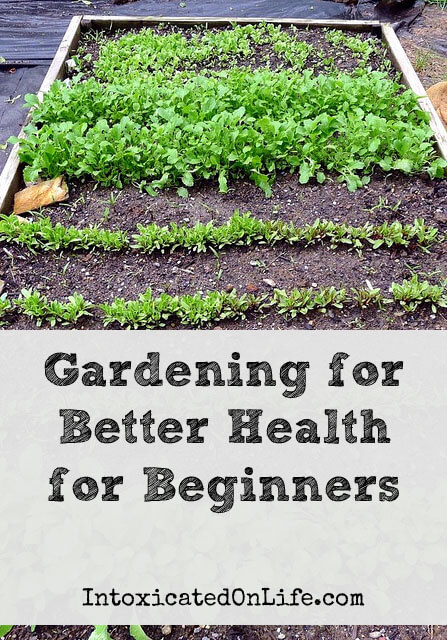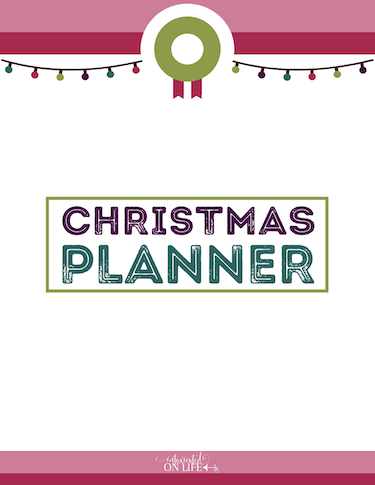Gardening season is approaching fast. It’s the time of year that gardeners everywhere are giddy with all the possibilities and longing for the green of spring. We’ve checked on our seed supply and ordered our dependable standbys, plus some can’t-wait-to-try-this new varieties.
Are you a veteran gardener? Or does the thought of something else to add to your plate overwhelm you?
Gardening is good for your health. Just look at it this way: Gardening = Better Food + Good Exercise. Could you use a little more of either of those in your life?
Better Food
In your own garden you will have complete control over what gets worked into your soil and sprayed on your plants. You can choose conventional pesticides and commercial fertilizers—I don’t recommend them, but it is your garden. Or you can choose to use better options like composting for soil upgrades and companion planting for controlling pests.
There seems to be some controversy over whether organic produce is actually better than conventional produce. If you are conflicted about this, I recommend reading Maria Rodale’s Organic Manifesto. The subject is deeper and more important than the nutritional value of a tomato.
No matter how you shake it, organic gardening reduces your chemical exposure. That alone makes it better food in my book.
Good Exercise
A garden will require some maintenance. It forces you to get outside almost daily, which helps your vitamin D levels and gets you breathing fresh air. And then you start to garden! Turning soil, pulling weeds, watering plants—it gets you moving and lifting.
Get Started Gardening
Now that you are convinced to start gardening for better health, but you may be wondering, where do I start? Here’s a quick start guide of things to consider for beginners:
1. Location – Where and How
You have lots of options here. You can have a traditional garden, use straw bales, plant in containers, or utilize some vertical space you have available. The most important things to consider for your garden are:
- the amount of sunlight a spot gets (you need 8+ hours for most garden plants)
- the accessibility of water
- is it in a spot where you won’t forget about it?
Further reading: Planning Your First Garden.
2. Supplies – What and Why
You don’t need a whole lot of fancy equipment to garden. And depending on what type of garden you chose, you may not need anything more than a trowel for digging in potting soil. If you are going with a more traditional garden, here’s a few tools you may find helpful:
- sturdy shovel – for digging and turning soil over
- garden hoe – for making rows and smoothing soil
- tine hoe – for aerating the soil and harvesting tubers like potatoes
- newspaper and grass clippings – use these to layer around your plants to keep weeds out and water in
- stirrup hoe – these make weeding a breeze if you don’t use newspaper and grass clippings
You may also want some things like gardening gloves (I use these) and baskets/containers for carrying your produce. Wheelbarrows and/or garden carts are also helpful if you have a large garden or a longer distance to carry your garden refuse or your water.
3. What to Plant?
When it comes to what to plant, I personally recommend starting with what you are already eating. This helps your grocery budget the most. You could also try adding some things that you want to eat but can’t seem to find room in your budget for consistently (like fruit, which tends to be more expensive). Some quick and relatively easy things to grow:
- lettuces and greens – these are the fastest garden plants you can get
- radishes and carrots – these require deeper soil (mix sand in your soil for better drainage and easier harvesting), but grow quickly
- green beans – pole beans add a new visual level to your garden’s appeal and produce abundantly
- dry beans – these are not quick, but they are pretty easy, plant and wait for them to grow beans and then dry out to shell
- tomatoes, cucumbers, and squash – perennial favorites that grow easily, but may require more maintenance like staking or trellising
If you buy heirloom or open-pollinated varieties, you can save seeds and further reduce your gardening budget each year. I have a list of places to order these types of seeds on my blog.
Gardening for better health doesn’t have to be overwhelming or complicated. Start with what you do know and grow from there.




This is great info – thank you! I’m hoping to have some small raised beds this year. I can’t wait to start gardening with my kiddos. My 6 year old is so excited, he can’t stop talking about it. Definitely checking out your sources for heirloom seeds! #BB100
My kids love to garden with us. When my son was 6, he told us he wanted to be a farmer. He’s still interested in it 3 years later. We’ve told our kids that it doesn’t matter if you end up being a farmer, being able to grow your own food is a very important (and, unfortunately, dying) skill. Best of luck with your raised beds! They made all the difference in the world for us when we started using them. 🙂
Great tips! Thank you for linking up to Good Tips Tuesday. I can not wait to get out there and get planting.
Thanks! I am starting to get garden fever, too!